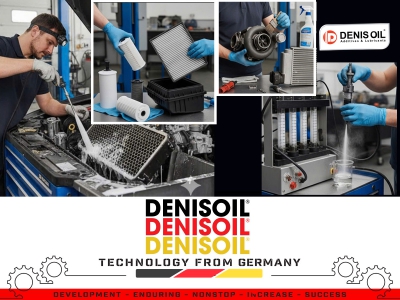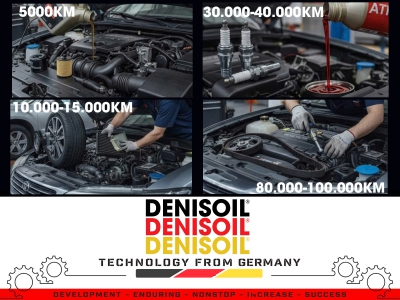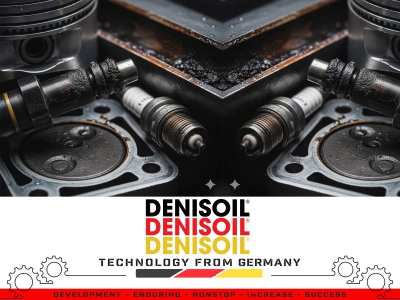I. FUNCTIONS OF LUBRICATING OIL
Lubricating oil in engines and machinery serves multiple critical functions beyond mere lubrication, ensuring optimal performance, extended service life, and operational reliability.
1. Lubrication
- Purpose: Forms a protective oil film between moving metal surfaces to reduce friction and wear.
- Mechanism: Creates a hydrodynamic film or boundary film to prevent direct metal-to-metal contact.
- Benefit: Minimizes mechanical wear and prolongs component life.
2. Cooling
- Purpose: Removes heat generated by friction and fuel combustion.
- Mechanism: Oil absorbs and transfers heat away from high-temperature zones to the oil cooler or less heated areas.
- Benefit: Maintains safe operating temperatures.
3. Cleaning (Detergency/Dispersancy)
- Purpose: Keeps surfaces clean, preventing deposit and sludge formation.
- Mechanism: Detergent and dispersant additives dissolve and suspend contaminants in the oil.
- Benefit: Prevents blockage, improves filtration efficiency, and sustains performance.
4. Rust and Corrosion Protection
- Purpose: Protects metal parts from oxidation and chemical corrosion caused by moisture, acids, and combustion by-products.
- Mechanism: Forms a protective layer and neutralizes acids.
- Benefit: Extends service life of metallic components.
5. Vibration and Noise Reduction
- Application: Especially important in gear systems and transmissions.
- Mechanism: Oil film absorbs shock and dampens mechanical impact.
6. Sealing
- Purpose: Prevents combustion gases from leaking past piston rings into the crankcase.
- Mechanism: Oil fills microscopic gaps between surfaces.
- Benefit: Maintains compression and improves engine efficiency.
II. COMPONENTS OF LUBRICATING OIL
Lubricating oil formulation consists of base oil and a carefully balanced additive package, blended to meet specific technical requirements.
1. Base Oil – 70% to 99% by weight
- API 1509 Classification:
- Group I: Solvent-refined mineral oil, <90% saturates, >0.03% sulfur.
- Group II: Hydroprocessed mineral oil, ≥90% saturates, ≤0.03% sulfur.
- Group III: Highly hydrocracked/isomerized mineral oil, VI > 120.
- Group IV: Polyalphaolefin (PAO) synthetic oils.
- Group V: All other base oils (esters, silicones, PAGs, etc.).
- Key properties: Viscosity, Viscosity Index (VI), flash point, volatility, oxidation stability.
2. Additives – 1% to 30% by weight
Main additive types and functions:
- Antioxidants: Prevent oil degradation at high temperature.
- Detergents: Remove deposits from hot metal surfaces.
- Dispersants: Keep contaminants suspended and prevent sludge formation.
- Anti-wear Agents: e.g., ZDDP to protect metal surfaces when oil film is thin.
- Extreme Pressure (EP) Additives: Protect gears and bearings under heavy loads.
- Rust/Corrosion Inhibitors: Shield metal surfaces from moisture and chemicals.
- Viscosity Index Improvers: Maintain stable viscosity across temperature range.
- Pour Point Depressants: Enhance low-temperature pumpability.
- Anti-foam Agents: Prevent air entrainment that reduces lubrication efficiency.
III. LUBRICANT PERFORMANCE CLASSIFICATIONS
- API (American Petroleum Institute): Engine oil service categories for gasoline (SP, SN…) and diesel (CK-4, CJ-4…).
- ACEA (European Automobile Manufacturers’ Association): European classification for light-duty and heavy-duty engines.
- SAE (Society of Automotive Engineers): Viscosity grades (SAE 0W-20, 5W-30, 15W-40…).
- OEM Specifications: Manufacturer-specific requirements (MB, VW, BMW, Volvo, etc.).
IV. CONCLUSION
Lubricating oil is the “lifeblood” of engines and machinery, ensuring:
- Reduced friction and wear
- Efficient cooling and cleaning
- Corrosion protection
- Sustained performance and extended service life
Choosing the right oil based on engine technology, operating conditions, and international standards is critical for long-term reliability.
 Tiếng Việt
Tiếng Việt
 Chinese
Chinese
 English
English







